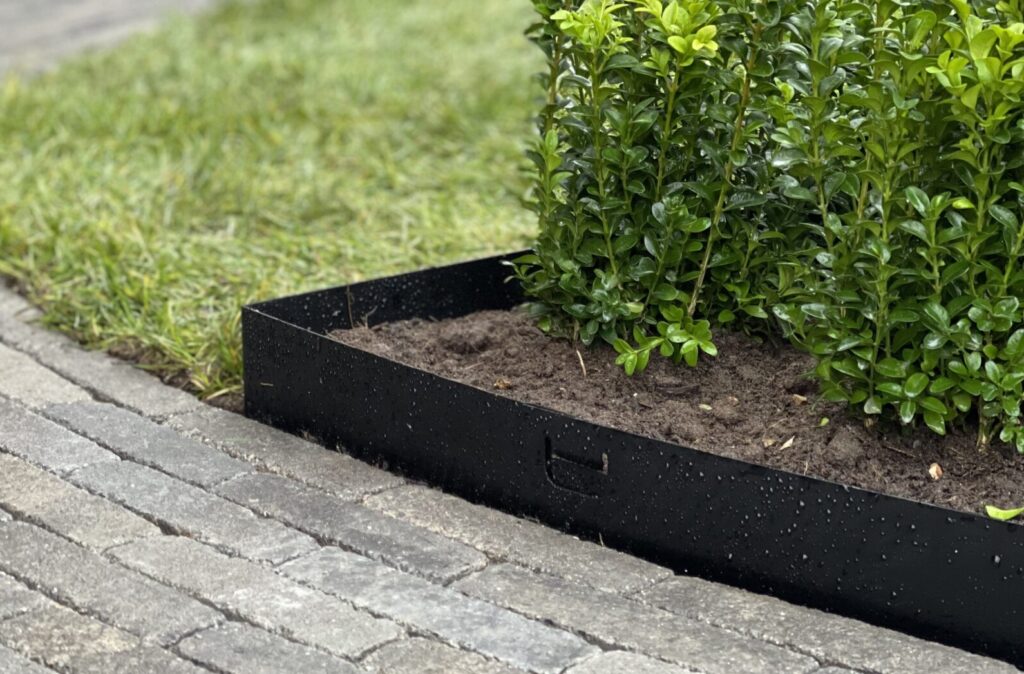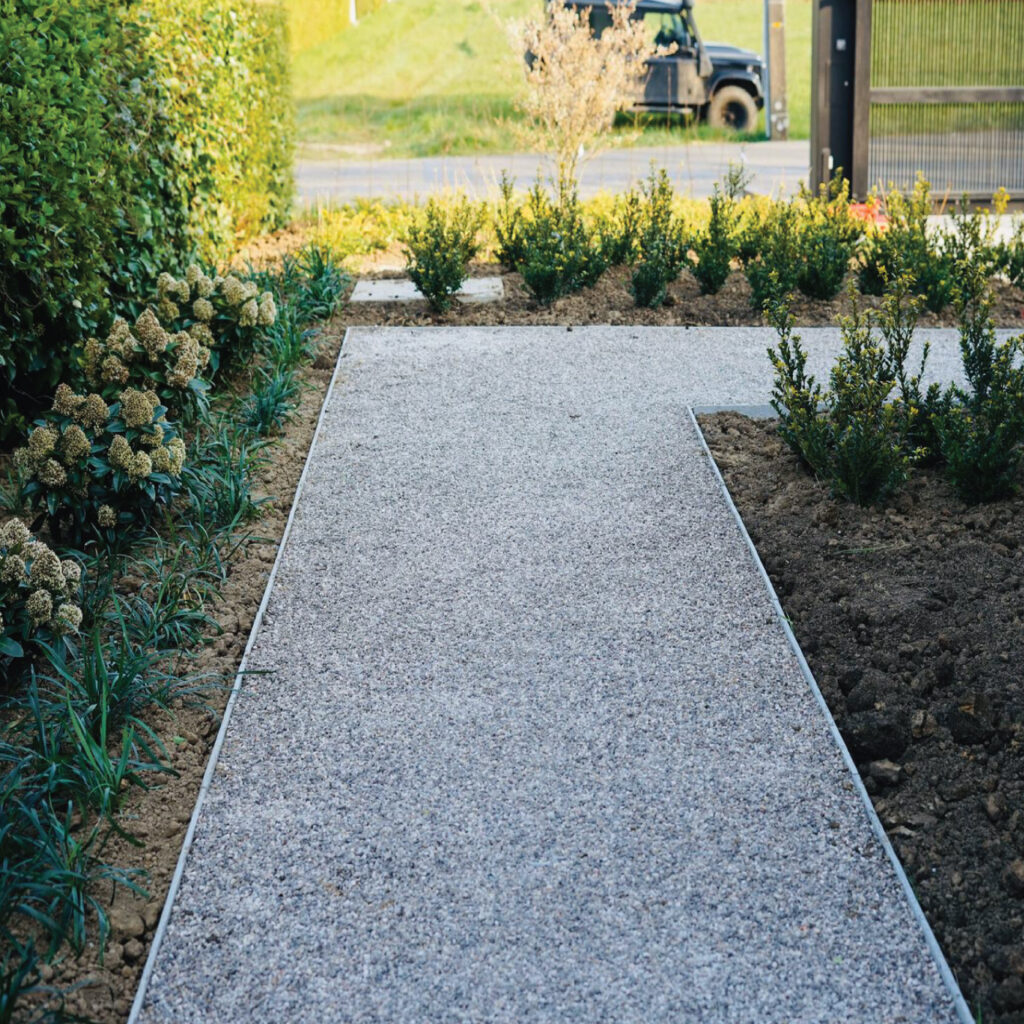Designing Garden Paths: A Guide to Garden Edging
Garden paths are an essential feature in any garden, providing structure and a clear route through your outdoor space. The right garden edging can make a huge difference, not just in how the path looks but in its long-term durability. Edging keeps path materials in place, reduces maintenance, and adds a professional finish.
This guide will help you choose the best garden edging for your paths and offer tips for installation and maintenance.
Why is Garden Edging Important?
Garden edging has several practical benefits:
- Defines Path Boundaries: Clear edging creates a neat, well-structured look and prevents the path from blending into surrounding lawns or garden beds.
- Keeps Materials in Place: Edging stops loose materials like gravel or soil from spilling over, keeping your path tidy and low maintenance. It also reduces debris on your garden path.
- Increases Path Durability: Properly installed edging strengthens the overall structure of the path, ensuring it lasts longer with minimal upkeep and reducing the chance of broken edges from developing.
Types of Garden Edging
There are several options to choose from when it comes to edging materials, each offering different benefits:
- Wooden Edging Wooden edging, such as tanalised timber, is a popular choice for its natural appearance. It’s particularly suitable for curved paths and soft landscaping. However, wood requires regular treatment to prevent decay, especially in wetter climates.
- Metal Edging (e.g., CORE EDGE) Metal edging offers a sleek and contemporary look. Products like CORE EDGE provide flexibility, making them ideal for curved paths. They are highly durable and can withstand the elements, ensuring a long-lasting, neat finish. Metal edging is great for gravel paths, as it holds the material firmly in place.
- Brick or Stone Edging Brick, granite setts, and other stone edgings provide a classic, robust finish. Perfect for formal paths, this option adds a sense of permanence and durability. It’s particularly suited for traditional gardens and can be laid in a variety of patterns to complement your garden style. But, this style of edging is often costly and time consuming to install.
- Plastic Edging High-density polyethene (HDPE) is a lightweight, flexible, and environmentally friendly option. Plastic edging works well for both curved and straight paths. However, it often looks cheap and will generally fail over time.
How to Install Garden Edging
Proper installation is key to ensuring your garden edging performs well and lasts for years. Follow these steps for a successful installation:
- Prep the Area:
- Clear any debris from the installation site and ensure the ground is level. This is crucial for a smooth finish.
- Lay a Guide:
- Set up a string line at the desired finish height for the top of the edging. This will serve as your guide during installation.
- Install the First Length:
- Place the first section of CORE EDGE along the designated border, firmly driving the integrated spikes into the ground.
- Connect Additional Pieces:
- Align the next piece to connect with the first. Secure each section using the top connection point.
- Complete the Connection:
- Activate the Dual Lock Mechanism® by bending back the folding tabs with pliers to ensure a solid connection between pieces.
- Secure the Edging:
- Tap the edging into the ground using a block of wood and a lump hammer to reach the desired height. Ensure it is aligned with the string line.
- Repeat the Process:
- Follow the same procedure throughout the installation, adjusting as necessary to accommodate curves or corners.
Best Edging for Different Path Materials
The type of path material you use will influence the best edging choice:
- Gravel Paths: Metal edging works best for gravel paths. These materials hold the gravel securely, preventing it from spreading into flowerbeds or lawns.
- Paved Paths: Stone or brick edging pairs well with paved paths, creating a cohesive and solid border. For a thinner more defined look, metal edging also works well.
- Loose Material Paths: For paths made with loose materials like mulch or wood chips, plastic or flexible metal edging is ideal for maintaining a tidy boundary.
Maintenance Tips for Edging
To keep your garden paths looking their best:
- Regular Inspections: Check the edging periodically to ensure it’s still secure. If any parts have shifted, adjust them to prevent the path material from spilling out.
- Top-Up Materials: Paths with loose materials, such as gravel, may need occasional topping up to maintain an even surface.
- Clean the Edging: Clear any dirt, debris, or plant growth from the edging to keep it visible and functional.
Conclusion
Selecting the right edging for your garden paths is a crucial step in achieving a polished, long-lasting result. Whether you choose traditional wooden edging, sleek metal, or durable plastic options, each offers unique benefits that enhance the overall look and function of your outdoor space. Products like CORE PRO EDGE and CORE PATH PRO provide both aesthetic appeal and practical advantages, ensuring your garden paths remain in great condition for years to come.
To stay updated on the latest blogs, offers and news, sign up for The Ideal Garden newsletter!
© The Ideal Garden 2024 All rights reserved. Privacy PolicyCookie PolicyTerms & Conditions
Marketing by Unity Online



